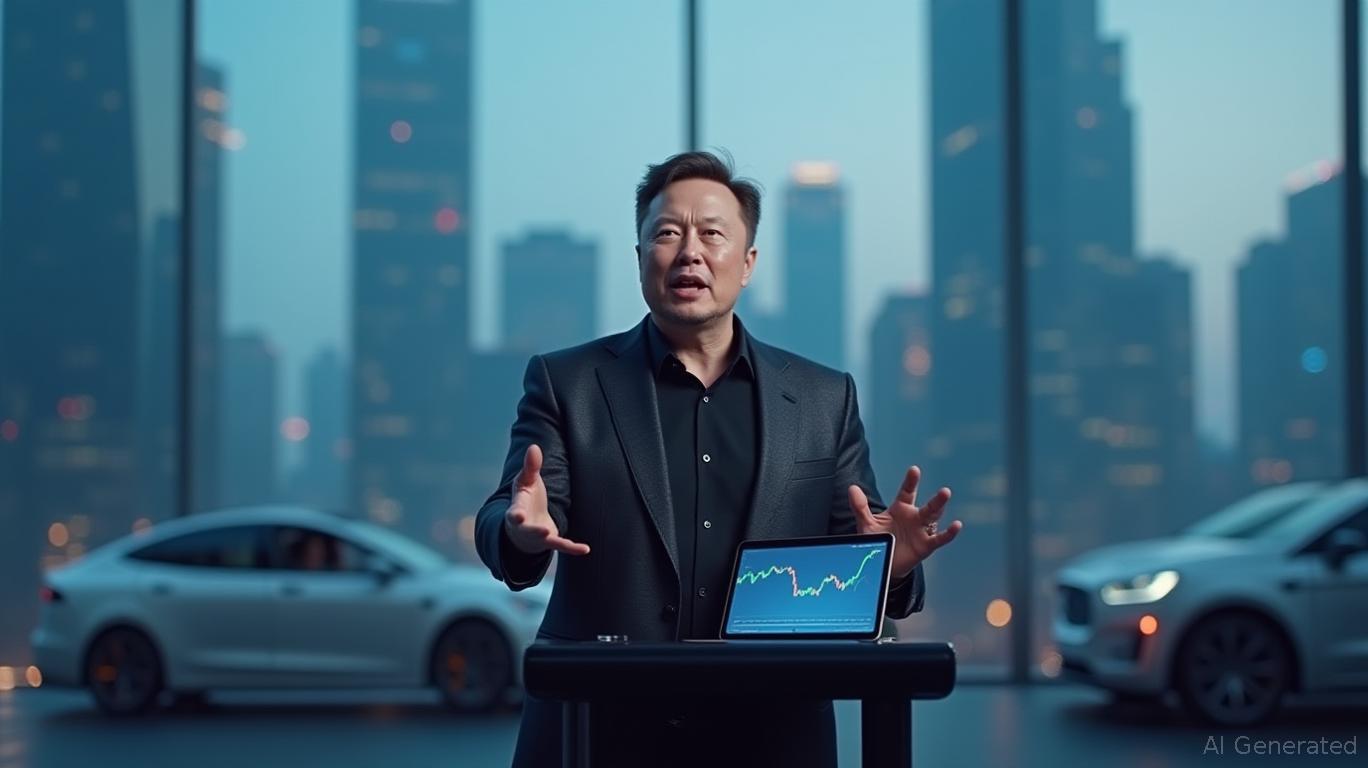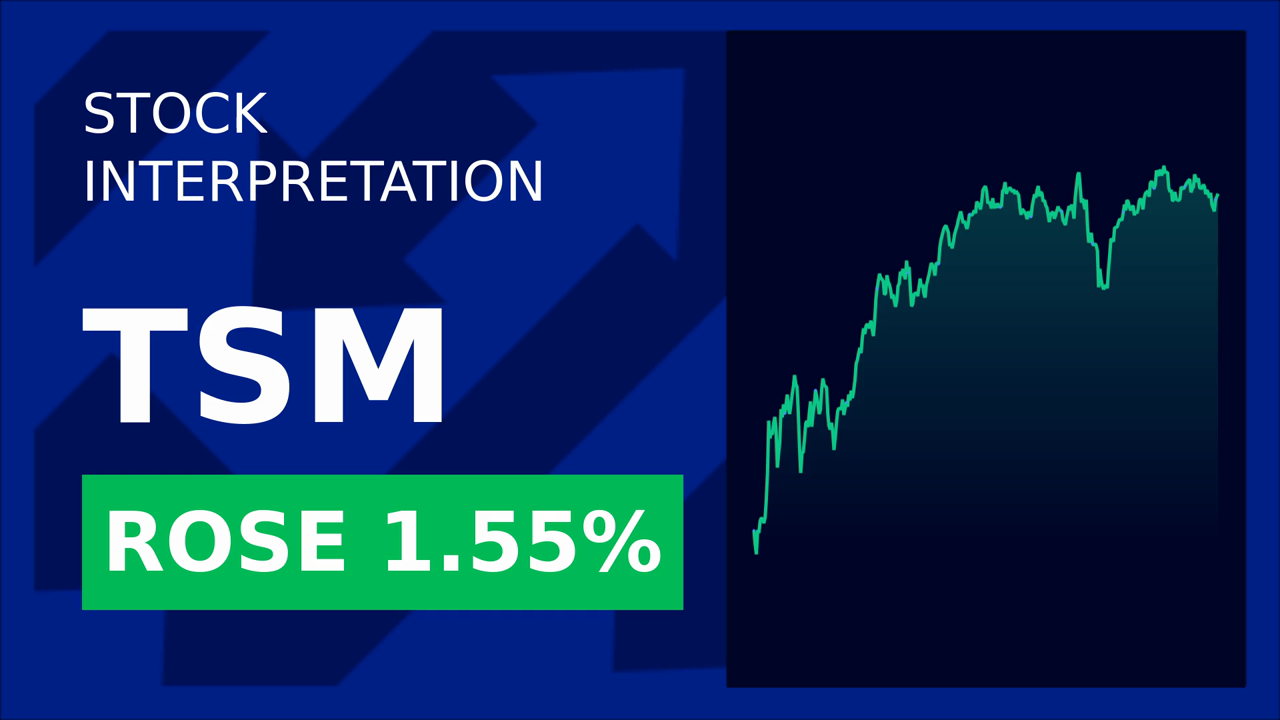TSMC: AI Chip Stock Surge and the Potential for a Stock Split
Sunday, Jan 19, 2025 10:48 am ET
Taiwan Semiconductor Manufacturing Company (TSMC) has been on a tear in the past year, with its stock price surging by 110%. This impressive performance can be attributed to the growing demand for artificial intelligence (AI) chips, as well as TSMC's leading position in the semiconductor industry. As TSMC's stock price continues to rise, investors are speculating about the possibility of a stock split. In this article, we will explore the factors contributing to TSMC's recent stock price surge, its valuation compared to peers, and the potential benefits and drawbacks of a stock split for the company and its investors.

TSMC's recent stock price surge can be attributed to several factors:
1. Strong demand for AI-related products: TSMC's CEO, C.C. Wei, estimated that the contribution of AI processor sales to TSMC's total revenue would triple this year. This is due to the increasing demand for AI chips, which are used in various applications such as data centers, autonomous vehicles, and consumer electronics (Source: "Chip stocks rise Thursday after TSMC reinvigorates Wall Street’s AI enthusiasm").
2. Growing market share in the AI chip market: TSMC is a key player in the AI chip market, which is expected to reach USD 117.50 billion by 2029, growing at a CAGR of 31.05% during the forecast period. TSMC's market share in this growing market contributes to its stock price surge (Source: "The Global AI Chip Market Size").
3. Increasing revenue and earnings: TSMC's net income increased by more than 50% in the third quarter of 2024, far exceeding Wall Street's estimates. This growth in revenue and earnings is a significant factor in the stock price surge (Source: "Chip stocks rise Thursday after TSMC reinvigorates Wall Street’s AI enthusiasm").
4. Positive analyst sentiment: Analysts have maintained a bullish outlook on TSMC's stock, with all 14 analysts polled by Visible Alpha holding a "buy" or equivalent rating for the stock. The average price target is around $249, suggesting 7% upside (Source: "Chip stocks surge Monday, led by Broadcom and AMD").
TSM Trend
TSMC's valuation can be compared to its peers using the forward price-to-earnings (P/E) ratio. As of the given date, TSMC's forward P/E ratio is 23.4, which is nearly identical to the average forward P/E for the S&P 500, which is also around 23.4. This suggests that investors view a position in TSMC as having the same upside as the broader market, indicating that TSMC is not currently overvalued.
Additionally, TSMC's share price of $213 is trading near a 52-week high, and the company has seen its valuation essentially double from roughly $500 billion to more than $1 trillion in just 12 months. This rapid growth in valuation suggests that TSMC's stock may be undervalued, as the company's strong performance and growth prospects have not yet been fully reflected in its stock price.
Furthermore, TSMC's valuation is lower than that of some of its peers in the AI chipmaking ecosystem. For example, Nvidia, another key player in the AI chip market, has a forward P/E ratio of around 40, which is significantly higher than TSMC's valuation. This suggests that TSMC may be relatively undervalued compared to its peers in the AI chipmaking sector.

A stock split for TSMC could have potential benefits and drawbacks for the company and its investors. Here are some key points to consider:
Benefits:
1. Increased liquidity: A stock split can increase the liquidity of a stock, making it easier to trade. This can attract more investors, including those who may not have been able to afford the stock at its current price. For example, after Nvidia's 4-for-1 stock split in July 2021, its stock became more accessible to a broader range of investors.
2. Potential for increased demand: A stock split can signal a bullish outlook from management, indicating confidence in the company's future prospects. This can potentially drive demand for the stock, as investors may see it as an attractive opportunity. For instance, after Super Micro Computer's stock price surged to around $900 per share, some investors might have been deterred by the high price, making a stock split an attractive option to increase demand.
3. Potential for higher stock price: While a stock split doesn't change the company's market capitalization, it can lead to a higher stock price in the long run. This is because the increased demand and liquidity can drive the stock price up. For example, after Nvidia's stock split in 2021, its stock price continued to rise, reaching over $900 per share as of May 2024.
Drawbacks:
1. Potential for lower stock price in the short term: Immediately after a stock split, the stock price may drop due to the increased number of outstanding shares. However, this is a temporary effect, and the stock price should eventually recover and potentially rise higher. For example, after Nvidia's stock split in 2021, its stock price initially dropped but later recovered and continued to rise.
2. Potential for lower bid-ask spreads: While a stock split can increase liquidity, it may also lead to lower bid-ask spreads, which can make it easier for short-sellers to target the stock. This could potentially lead to increased volatility and a lower stock price in the short term. However, this is a minor drawback compared to the potential benefits of a stock split.
In conclusion, TSMC's recent stock price surge is driven by strong demand for AI-related products, growing market share in the AI chip market, increasing revenue and earnings, and positive analyst sentiment. The sustainability of this growth is supported by the growing AI market, strong demand for AI chips, and positive analyst sentiment. TSMC's valuation is in line with the broader market and may be undervalued compared to its peers in the AI chipmaking sector. A stock split for TSMC could have potential benefits, such as increased liquidity, potential for increased demand, and a higher stock price in the long run. However, there are also potential drawbacks, such as a lower stock price in the short term and lower bid-ask spreads. Ultimately, the decision to execute a stock split should be based on the company's specific situation and the outlook for its future prospects.



_694d53511749053869043.jpeg)






Weeks ago I started my trading journey with $1000 and didn’t have much experience. After few days of consistent work and following the recommendations of Elizabeth Towles on Whatsapp +1563 279-8487,I managed to grow my account to $8850